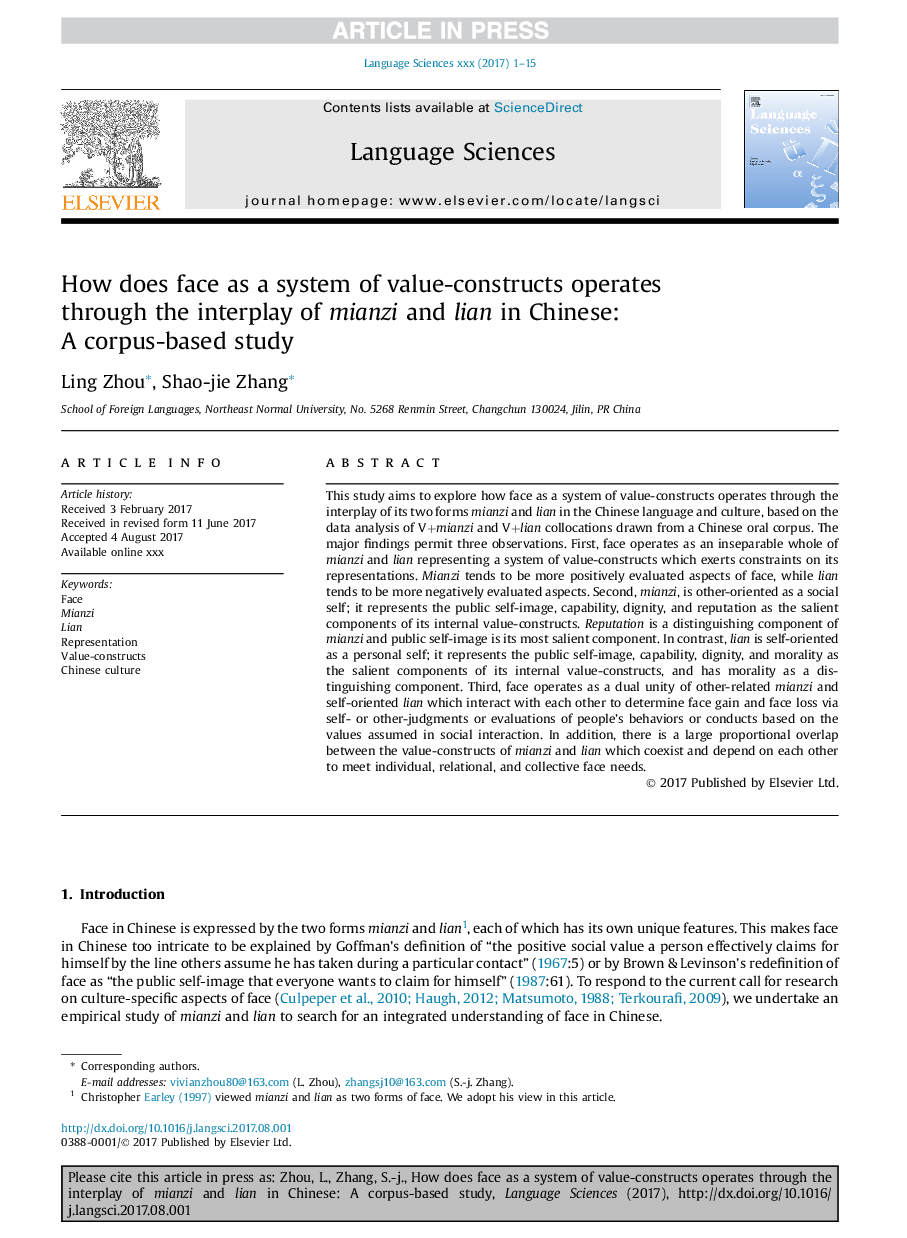| Article ID | Journal | Published Year | Pages | File Type |
|---|---|---|---|---|
| 5124512 | Language Sciences | 2017 | 15 Pages |
Abstract
This study aims to explore how face as a system of value-constructs operates through the interplay of its two forms mianzi and lian in the Chinese language and culture, based on the data analysis of V+mianzi and V+lian collocations drawn from a Chinese oral corpus. The major findings permit three observations. First, face operates as an inseparable whole of mianzi and lian representing a system of value-constructs which exerts constraints on its representations. Mianzi tends to be more positively evaluated aspects of face, while lian tends to be more negatively evaluated aspects. Second, mianzi, is other-oriented as a social self; it represents the public self-image, capability, dignity, and reputation as the salient components of its internal value-constructs. Reputation is a distinguishing component of mianzi and public self-image is its most salient component. In contrast, lian is self-oriented as a personal self; it represents the public self-image, capability, dignity, and morality as the salient components of its internal value-constructs, and has morality as a distinguishing component. Third, face operates as a dual unity of other-related mianzi and self-oriented lian which interact with each other to determine face gain and face loss via self- or other-judgments or evaluations of people's behaviors or conducts based on the values assumed in social interaction. In addition, there is a large proportional overlap between the value-constructs of mianzi and lian which coexist and depend on each other to meet individual, relational, and collective face needs.
Related Topics
Social Sciences and Humanities
Arts and Humanities
Language and Linguistics
Authors
Ling Zhou, Shao-jie Zhang,
